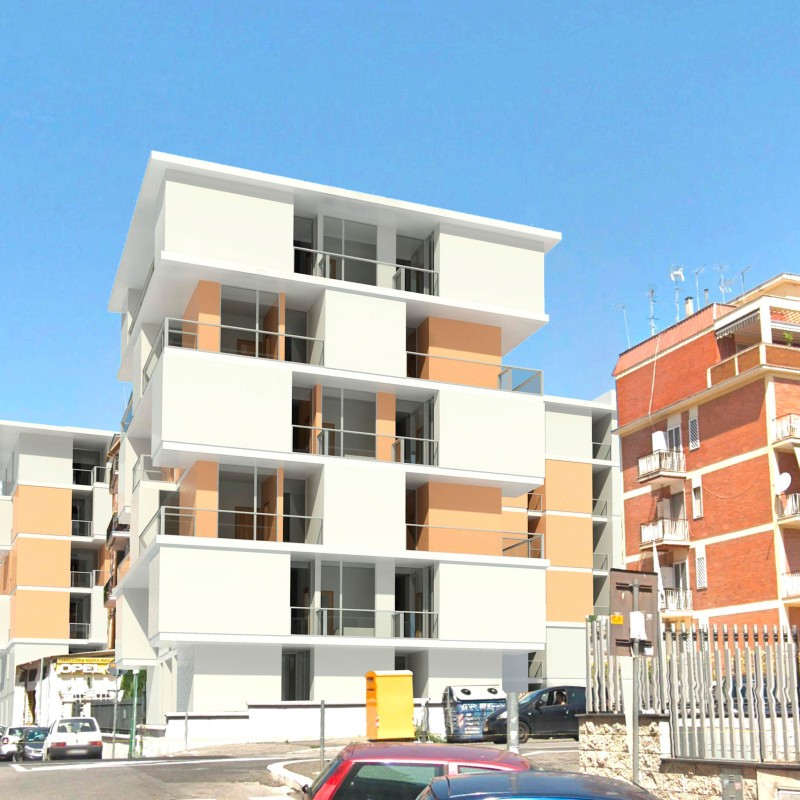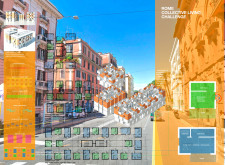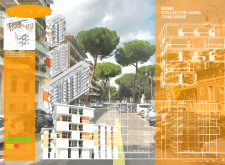5 key facts about this project
The design located in Rome investigates the concept of collective living through its thoughtful arrangement of spaces. The project aims to integrate areas for social interaction with private apartments, enhancing connections among residents. The design focuses on providing functionality while creating an inviting atmosphere for communal experiences in an urban context.
Spatial Organization
The layout combines private spaces, such as bedrooms and bathrooms, with shared areas dedicated to dining and leisure. This configuration allows individuals to enjoy their own personal space while also engaging with neighbors. By carefully positioning these areas, the design encourages both privacy and community living in a balanced manner.
Common Areas and Loggias
The common areas are constructed to respond to typical challenges, like noise control, often found in communal living environments. These spaces promote interaction among residents and create opportunities for casual gatherings. Loggias expand the indoor living space into the outdoors, enhancing comfort and providing shade. This connection between inside and outside is both practical and visually appealing, enhancing the overall living experience.
Internal Patios
Internal patios play an important role in linking the small apartments to common areas. These patios create a communal setting that feels both open and inviting. They allow natural light to filter into the interior spaces, making them feel larger and more connected to the outside. Residents benefit from this flow between their homes and shared areas, fostering a sense of community.
Architectural Diversity
The project features three buildings, each with distinct façades that reflect different aspects of urban design. Some buildings maintain a traditional alignment with the surrounding historical context, while others adopt a more modern appearance. This diversity enriches the environment, making it more adaptable to the character of the neighborhood while contributing to a cohesive overall design.
Each element works together to create a comfortable living environment that encourages community while respecting personal boundaries. The careful incorporation of loggias and internal patios enhances the connection between private and shared spaces, providing residents with both intimacy and opportunities for social interaction.





















































